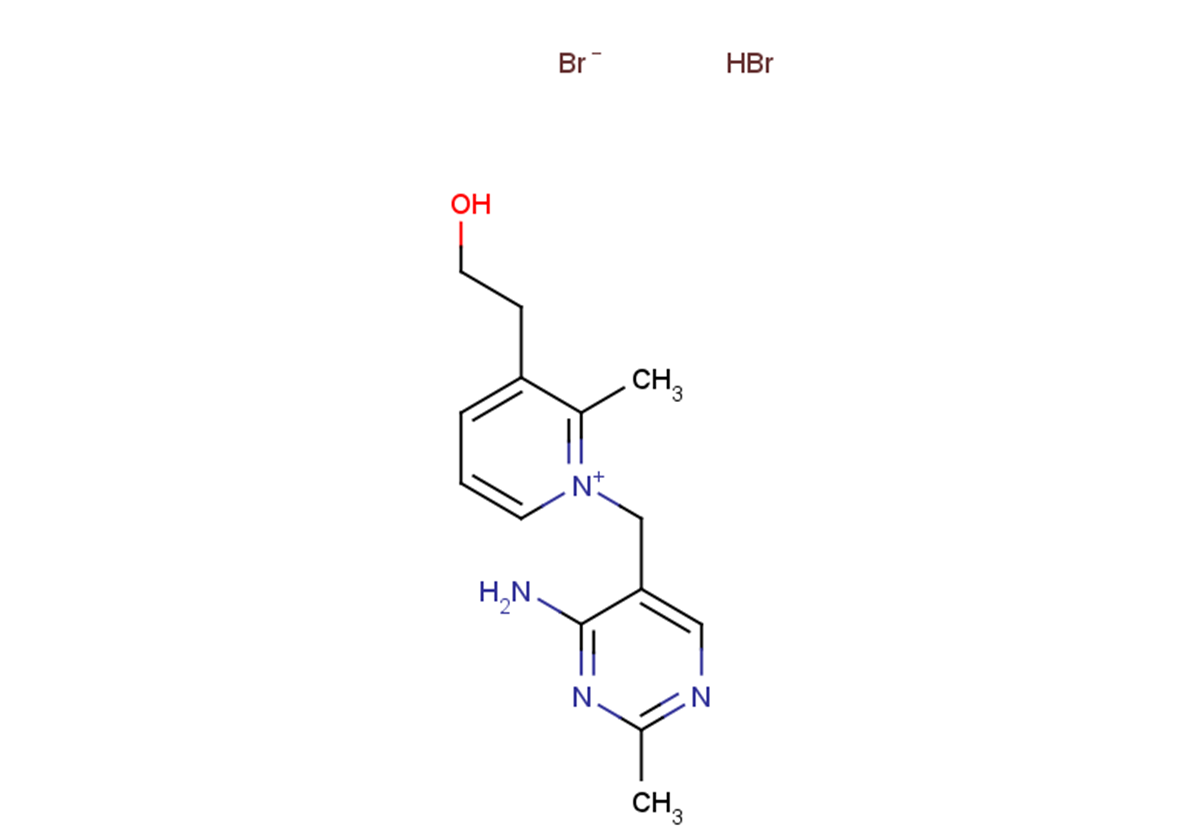Pyrithiamine (hydrobromide)
| Code | Size | Price |
|---|
| TAR-T36947-5mg | 5mg | £850.00 | |||||||||||||||||||||||||||||||||||||||||||||||||||||||||||||||||||||||||||||||||||||||||||||||||
| Special offer! Add £1 to your order to get a TargetMol CCK-8 Kit. Read more here. | |||||||||||||||||||||||||||||||||||||||||||||||||||||||||||||||||||||||||||||||||||||||||||||||||||
Quantity:
| TAR-T36947-50mg | 50mg | £1,661.00 | |||||||||||||||||||||||||||||||||||||||||||||||||||||||||||||||||||||||||||||||||||||||||||||||||
| Special offer! Add £1 to your order to get a TargetMol CCK-8 Kit. Read more here. | |||||||||||||||||||||||||||||||||||||||||||||||||||||||||||||||||||||||||||||||||||||||||||||||||||
Quantity:
| TAR-T36947-100mg | 100mg | £2,079.00 | |||||||||||||||||||||||||||||||||||||||||||||||||||||||||||||||||||||||||||||||||||||||||||||||||
| Special offer! Add £1 to your order to get a TargetMol CCK-8 Kit. Read more here. | |||||||||||||||||||||||||||||||||||||||||||||||||||||||||||||||||||||||||||||||||||||||||||||||||||
Quantity:
Prices exclude any Taxes / VAT
Overview
Regulatory Status: RUO
Shipping:
cool pack
Storage:
-20℃
Images
Documents
Further Information
Bioactivity:
Pyrithiamine is the pyridine analog of thiamine that prevents growth of organisms that require intact thiamine. [1] It inhibits the growth of bacterial and fungal species at a pyrithiamine:thiamine ratio of 10:1 in growth media and induces symptoms of thiamine deficiency in mice at a dietary ratio of 3:1. These effects are reversible with addition of sufficient thiamine in all species. Pyrithiamine inhibits the formation of cocarboxylase from thiamine in chicken blood in a dose-dependent manner. [2] It has been used to induce thiamine deficiency in various disease models, including rat models of alcoholism and diencephalic amnesia, to study the effects of thiamine deficiency on disease pathology.[3] [4]
CAS:
534-64-5
Formula:
C14H20Br2N4O
Molecular Weight:
420.149
Purity:
0.98
SMILES:
Br.[Br-].Cc1ncc(C[n+]2cccc(CCO)c2C)c(N)n1
References
Woolley, D.W., and White, A.G.C. Selective reversible inhibition of microbial growth with pyrithiamine. J. Exp. Med. 78(6), 489-497 (1943).
Woolley, D.W. An enzymatic study of the mode of action of pyrithiamine (neopyrithiamine). J. Biol. Chem. 191(1), 43-54 (1951).
Zahr, N.M., Sullivan, E.V., Rohlfing, T., et al. Concomitants of alcoholism: Differential effects of thiamine deficiency, liver damage, and food deprivation on the rat brain in vivo. Psychopharmacology (Berl) 233(14), 2675-2686 (2016).
Vetreno, R.P., Anzalone, S.J., and Savage, L.M. Impaired, spared, and enhanced ACh efflux across the hippocampus and striatum in diencephalic amnesia is dependent on task demands. Neurobiol. Learn Mem. 90(1), 237-244 (2008).



